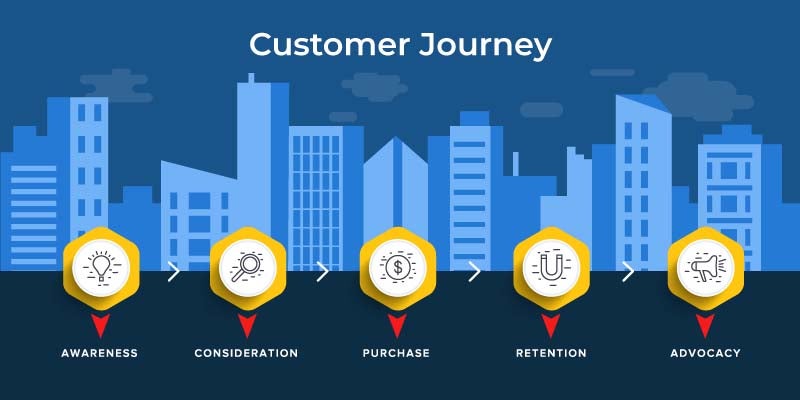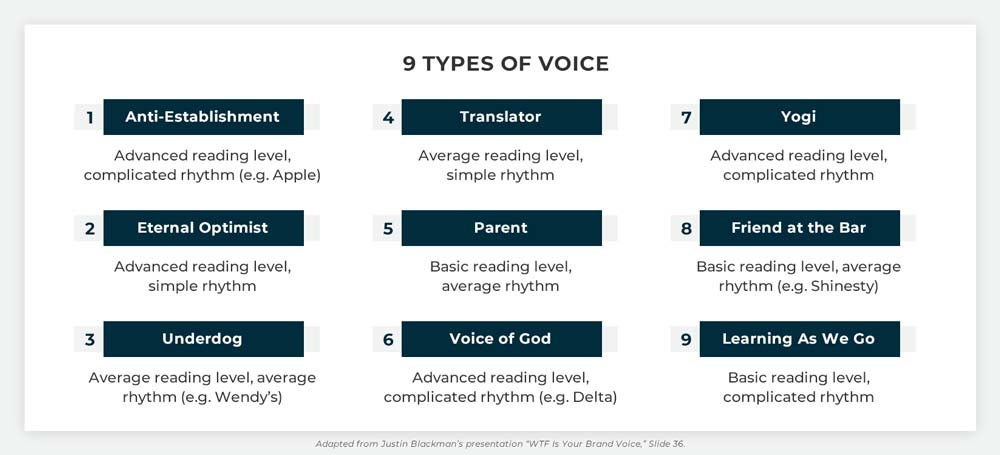The 3 Documents You Need for a More Effective Content Marketing Strategy
After attending the Content Marketing Conference 2020 online, one thing was clear: You need a well-researched, documented content marketing strategy to achieve your content marketing goals.
It doesn’t matter if your content marketing is in the early stages of maturity or if you’re part of the 37-percent club that has already drawn up a content marketing strategy. You still need to get back to basics if you want to boost your branding.
If you want to improve your content from the very foundation, start by developing these three documents as recommended by the best in the content marketing business.
A Message Architecture
Creating content is time-consuming, costly, and requires a lot of attention from different team members. The more volume and variety of content you create, the more important it is to set expectations so you can get things right the first time round.
“If you don’t know what you need to communicate, how will you know if you succeed?”
- Margot Bloomstein, Brand and Content Strategy Consultant at Appropriate, Inc.
A message architecture is a hierarchy of content marketing goals. This allows you to reflect a common vocabulary as opposed to general ideas, business values, and ethics. Because of its hierarchical structure, you can always be sure of which type of messaging to prioritize without referring to a committee for every piece of content.
Let’s take a look at this example of a message architecture that would fit the Mini brand:

Your message architecture will drive content as it tells your writers exactly which brand attributes to use and emphasize. In the case of Mini, “Premium Technology” always takes priority. This can help determine content topics, medium, and even calls to action, so you can create a seamless content experience and minimize costly rewrites.
How to Create a Message Architecture
As with any of these documents, you will get better results if you can bring together team members who are familiar with your brand and understand your content marketing goals. Spend some time going over the following three steps and you’ll put your brand in a stronger position for years to come.
Step 1: Categorize Descriptors of Your Brand
Place sticky notes with different descriptors in three columns: The descriptors that don’t reflect your brand, the ones that do reflect your brand, and ones you would like to reflect your brand.
Step 2: Filter Out Who You’re Not and Focus on What You Want to Be
Remove the sticky notes that describe what your brand is not, so you’re left with the sticky notes that describe what your brand is and hopes to be.
Step 3: Group and Prioritize Your Descriptors
Create word clouds of similar descriptors and then prioritize each word cloud based on how important those words are to your brand’s communication. Now you’ve got the outline of your message architecture!
Once you’ve decided your final message architecture, you can prioritize changes to support your ideal content. You may find that you need to relocate budgets to develop more appropriate content or to improve your existing content to meet your content marketing goals.
A Content Plan
By analyzing your business, your competition, and your customers, a content plan allows you to pinpoint your challenges, opportunities, and goals. Your content plan will also help you answer the following questions, which can determine your content marketing investment and ROI:
- What type of content resonates best with your audience?
- How much content do you need to produce to capture the market share?
- What channels should you use for content distribution?
“Content plans are like a GPS for content marketing, defining the goals, strategy, and tactics for success.”
- Byron White, CEO of WriterAccess and Content Marketing Conference Chair
How to Create a Content Plan
A comprehensive content plan is made up of three main parts: industry research, a content audit, and audience insights. Together, they can give you the full picture for deciding your content marketing goals.
1. Industry Research
Take a look at your competitors’ websites and social media channels to see their publishing volume and social reach. Use a tool like BrightEdge to look for keyword opportunities in your industry. You may find that your competitors are producing more content than you — or you may find that they aren’t making use of all the channels and keywords your target market is using.
Another way to create content that delights readers and captures market share is to research topics and trends. Quora and Answer the Public show the conversations people are having about different topics. You can make your content more valuable by answering common questions and educating your audience on the topics that interest them most.
2. Content Audit
By auditing your content, you can see what content you have, how it’s performing, and how it can be improved to meet your content marketing goals.
Go over all your assets from blog posts and videos to case studies and whitepapers. Use a spreadsheet to track each piece of content, including its link, author, date of publication, and any areas that need to be updated. Add key metrics, such as the number of views and shares the content has received. This will help you develop more of the content that works and fill any gaps in your current content marketing strategy.

3. Audience Insights
As well as understanding the topics your audience is interested in, you need to have a strong grasp of who your audience is to develop the most relevant content. Documenting personas for your different buyers allow you to personalize your content to drive engagement among your target audience.
Customer journey maps are another way to craft the right content for your target market’s needs. Your readers require different information depending on where they are in their customer journey — whether they’re just discovering their need for your product or service or ready to make a purchase from you. Your content marketing strategy should be designed to resonate with your target audience and support them at every step in their journey.
A Brand Voice Guide
Your brand’s voice can be measured — after all, it has a structure. Every voice is made up of words, tone, and rhythm.
There are certain words that your brand uses to ensure a level of readability based on your industry, audience, and regionality. You may even use memes, gifs, and emojis instead of words. The tone of your content influences how your brand comes across. Maybe you evoke passion or boost optimism. The rhythm of your voice (and the consumption time of your content) is determined by your sentence length, word length, and punctuation.
“No matter how unique your voice, whether you’re a big or a small company, it will fall somewhere on the brand voice scale.”
- Justin Blackman, Owner and Copywriter at Pretty Fly Copy
Blackman presented nine types of voice at the Content Marketing Conference 2020. They are grouped below by their shared tones:

For example, Apple’s world-renowned brand voice falls under the “Anti-establishment” category. That’s probably not surprising if we think back to the tone of their 1984 ad. Although this brand uses short, snappy sentences, their content is at a 12th-grade level because of the advanced word choices. Delta is at a similar reading level because of the longer sentence structure, but the tone makes their brand “Voice of God.”
How to Create a Brand Voice Guide
Many brands already have a brand voice guide and you may have one too. If you do, take a look at it now and answer the following questions:
- Does it contain loose descriptions and persona emotions?
- Are there different guidelines for each channel you use?
- Was this guide created using a template from another brand?
If you answered yes to any of these questions, your brand voice guide could use a facelift so that it’s more concrete, easy to use, and specific to your brand. A more actionable brand voice guide will prevent any disconnection between anyone writing, approving, or reading your content.
If, during your content audit, you found content that embodies your brand voice, you can analyze this text to find your brand voice. Blackman recommends using AI to get a scientific breakdown of your voice and the following popular writing tools can be used to get the information you need.
- To learn about your brand’s word choice and readability, try the Hemingway app.
- To understand your tone, use the IBM Watson Tone Analyzer.
- To find out more about the rhythm of your voice, go to Analyze My Writing.
Once you have the details that make up your voice, you can consider which of the nine types of voice it belongs to. (Giving your brand voice a name may help you relate to it.) Then, create a document that lays out your brand voice with clear and specific guidelines. You can also include a list of dos and don’ts to help content writers understand what your brand voice is and what it isn’t. This will ensure that, no matter who writes your content, your voice is on-brand each and every time.
It may take some time and effort to develop these key documents, but they will help you create more powerful branded content — without having to keep going back to the drawing board to get it right. This will allow you to streamline your content creation process and reach your content marketing goals.
For more help creating your content foundations, reach out to the content marketing experts at REQ.

